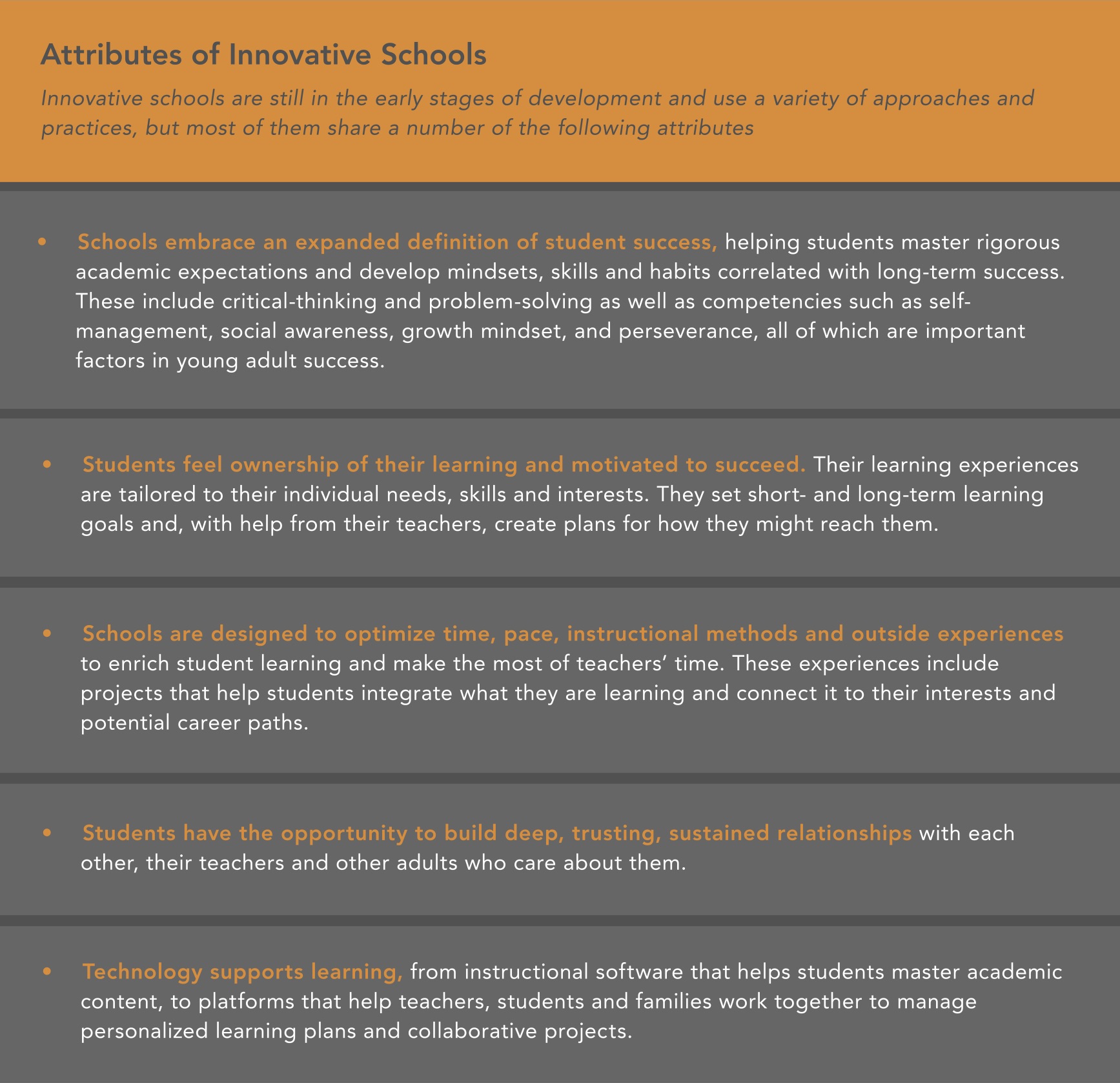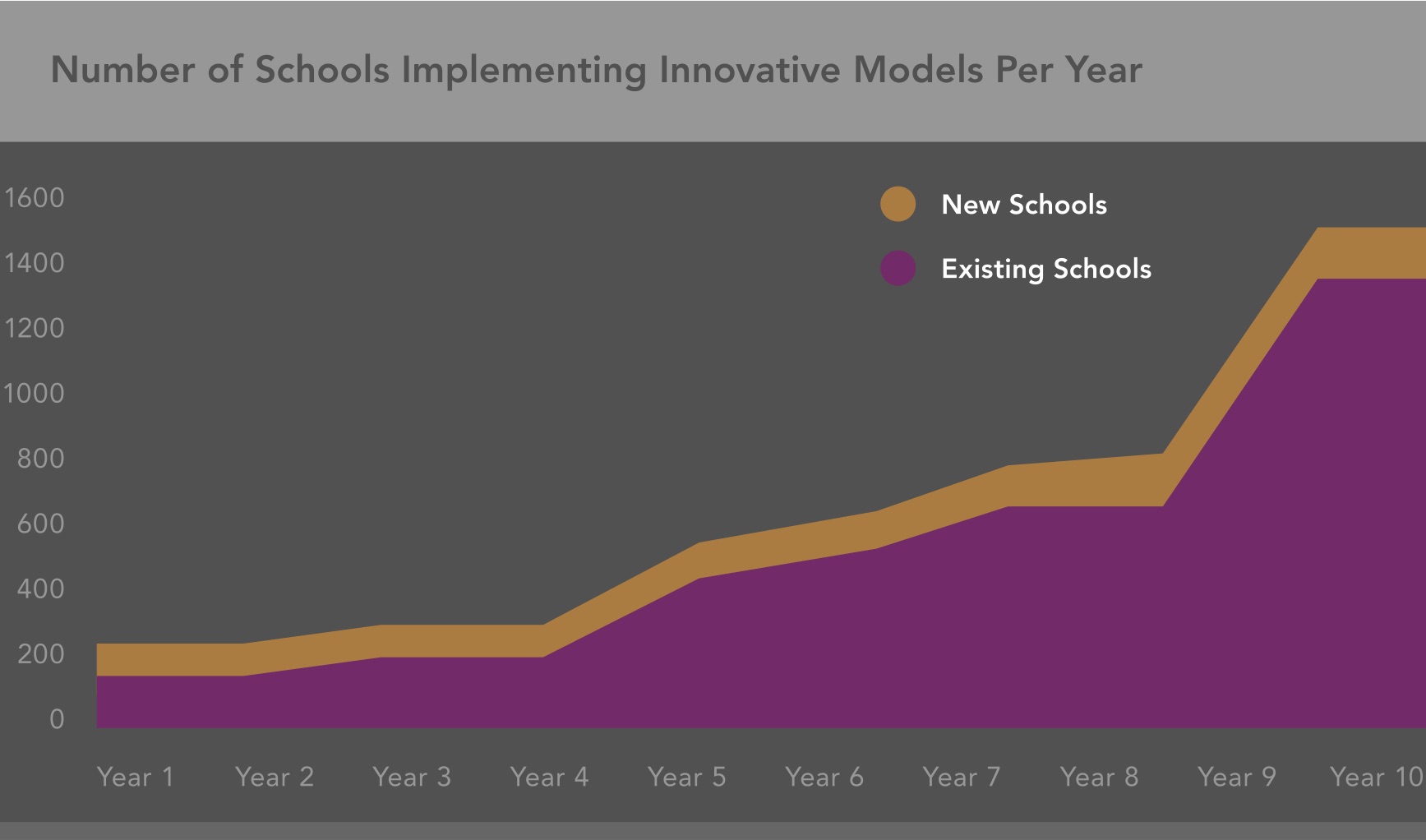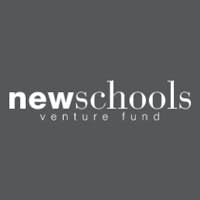Every January, it’s customary to make resolutions and predictions for the new year. This year, I want to go all out and make a prediction not just for the next year, but for the next decade. The caveat is that this prediction can only come true if many educators, entrepreneurs and funders work toward a shared vision; happily, this work is already well underway. What we need now is a roadmap for how these efforts might add up to real, meaningful results for young people.
At NewSchools, we’ve been working with partners across the country who are pursuing a shared vision: reimagining learning with a broad set of outcomes in mind so that every student finishes high school with an abundance of choices and the freedom to pursue them.
Most schools weren’t designed with this vision in mind. In fact, the ways we live and work today are dramatically different than they were 100 years ago—but most schools are largely the same. All across the country, teams of educators are now working to change this. They are partnering with families to create schools that speak to their hopes and honor their strengths. These schools prioritize rigorous academics and help students develop critical thinking skills, set important goals and create plans to reach them, and develop the mindsets and habits they need to take charge of their futures.
While we can’t claim ownership of this vision, at NewSchools we want to do our part by amplifying it and helping more people take notice of the momentum that’s been quietly growing for some time. If I’ve piqued your curiosity, I invite you to learn more by checking out our new report, Reimagining Learning: A Big Bet on the Future of American Education.
Although the team at NewSchools created the Reimagining Learning website and its companion document, we’re only a part of the innovation happening all over the country. Thousands of people are working to reimagine schools in districts and charter networks. These innovative schools are still in the early stages of development and use a variety of approaches and practices, but most of them share a number of key attributes—which we describe in the report. An ecosystem of nonprofit and for-profit organizations is also growing rapidly, providing services, technologies, talent, and R&D to make it easier for schools to make these shifts.

If we foster this momentum, over the next decade 3.5 million students could have more effective learning experiences in approximately 7000 new and redesigned innovative schools.

What will it take to make this happen? Our proposal is to channel $4B of philanthropy into this type of innovation over the next 10 years. That might sound like a pretty large amount of money, and I guess it is. But, it doesn’t seem so big if you think about it like this: it’s only 20 percent of the total philanthropy that will flow to K-12 education in the coming decade, and it’s less than 1 percent of the $600B in public spending on K-12 education every year. Put another way, $4 billion is only slightly more than the nationwide cost of one day of school at current public spending levels.

The big question is this: even with such a substantial investment, can it make a difference? Will schools produce better results? Many of us across the sector are betting the answer is yes. This is based on early research that shows students in these types of innovative schools learn more than students like them in traditional schools. We estimate the return on the $4B investment (ROI) could be between 2x and 5x, depending on overall performance as the number of innovative schools increases. We provide a detailed explanation of these ROI estimates in our Reimagining Learning report.
In it, we propose investments in three key areas:
- Innovative Schools—Hundreds of innovative schools have been launched or redesigned in the last few years. The pace can be accelerated by creating new district and charter schools, redesigning existing schools and strengthening the ecosystem for innovation.
- Targeted Technology Investments—Technology is not a silver bullet, but it can be an important part of more personalized learning experiences and can help schools adopt innovative designs more easily and effectively. A more coordinated and intensive R&D effort could catalyze relevant technology breakthroughs to help dramatically improve learning.
- Campaign to Foster Understanding and Demand—Most parents and teachers agree that schools should help every student achieve academically and develop the mindsets, habits and skills that will help them reach their full potential. We need better ways to integrate their voices and ideas in the design and creation of innovative schools.
What might the future might look like if we made such a coordinated and ambitious bet on reimagining learning over the next ten years, one in which every young person is prepared and inspired to reach his or her unique and full potential?
Looking even further ahead—twenty-five years from now—I think it’s possible for all students to have at least one school in their neighborhood that is designed to help them finish high school with the freedom to choose the life they want and to pursue it successfully.
Three years ago, my New Year’s prediction in EdSurge was that the concept of personalized learning would go mainstream, which turned out to be pretty accurate. Here’s hoping this ten-year prediction will come to pass as well!



